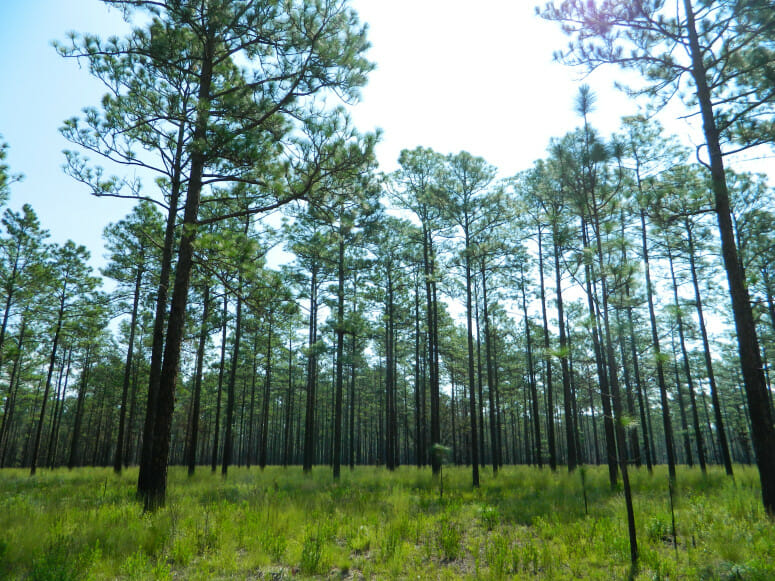All over the planet, especially in Africa and Asia, we’ve seen grand reforestation initiatives announced that intend to plant millions—or even billions—of trees. Many of them are disastrous failures.
Sometimes this is due to poor management: all of their funding is spent on the planting process, which produces great photo ops for the politicians, but none is reserved for actually watering the seedlings.
Other times, these efforts fail to consult certified ecological restoration professionals. They figure “Hey: how hard can reforestation be? You just plant trees, right?”
Wrong. That might work for non-native tree farms, but it seldom works when the goal is to restore a biodiverse native forest ecosystem.
The University of Wisconsin-Madison was the birthplace on restoration ecology in the United States, as documented in my 2002 book, The Restoration Economy. I (Storm Cunningham) was one of the first 200 members of the Society For Ecological Restoration, and followed that school’s pioneering work closely.
Recently, the university showed that they are still on the leading edge, with research proving that the best first step in restoring a particular species might ignore that species. Restoring the species that provide a supportive home for the target species is often the best strategy.
This idea is common sense and nothing new in practice, of course, but it’s important to scientifically prove what common sense is telling us. Some successful strategies are counterintuitive.
In the race to restore some of North America’s most biodiverse and threatened ecosystems, having a straightforward first step is likely among the most important.
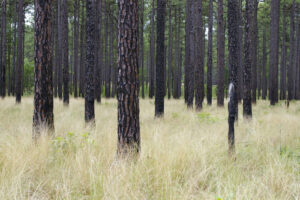
This area at Fort Bragg in North Carolina is an example of a healthier longleaf pine understory dominated by wiregrass. The tree trunks show evidence of previous wildfires, which are an important part of a healthy longleaf pine ecosystem. Fire intervals in high-quality sites are typically once every four years or more frequently. PHOTO: W. BRETT MATTINGLY
New research shows that degraded savanna ecosystems can reap lasting benefits from a single seeding of native understory plants.
Much of this research was conducted at Fort Bragg in North Carolina, where I (Storm Cunningham) was stationed with the 7th Special Forces Group in the early 70s.
Since Green Berets operate in small, 12-man A-Teams—usually behind enemy lines—we were taught that oblique strategies often work best. This new research shows that oblique strategies work in restoring nature, as well.
Published in February of 2023 in the journal PNAS, the study underscores the long-term value of even a brief burst of targeted land management in efforts to restore fallow agricultural fields and other landscapes scarred by decades or centuries of human activity.
The eight-year experiment led by a team of scientists at the University of Wisconsin–Madison and Michigan State University centered on three large tracts of federal land within the historical range of the longleaf pine savanna ecosystem. Longleaf pine savanna dominated portions of the southeastern United States prior to the arrival of Europeans.
This biodiversity hotspot once spanned some 90 million acres but has largely vanished.
Less than 5 percent of the continent’s longleaf pine savanna remains, and much of what does persist is a shadow of the unspoiled ecosystem of the past.
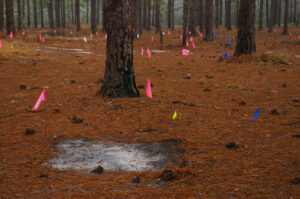
An experimental plot at Fort Bragg in North Carolina shows how devoid of plant life a highly degraded longleaf pine understory can be. This photo was taken at the beginning of the experiment before the seed additions had time to establish. PHOTO: W. BRETT MATTINGLY
The longleaf stands where the researchers set up their experiment started out with decidedly fewer plant species than an unspoiled tract would contain.
But, after assessing more than 230 sites, the team selected 48 that met specific parameters.
These criteria allowed them to gauge whether factors like the depth of fallen pine needles or the spacing between trees would measurably affect whether native understory plants could establish or persist after seeding.
Once the researchers identified their desired mix of sites, they applied herbicide to portions of some before planting them all with seeds from about two dozen species of native non-woody plants that they collected locally, including tall ironweed and sweet goldenrod.
Over the course of eight years, the team returned periodically to document how successful each species was in becoming established and, crucially, how well they persisted year after year.
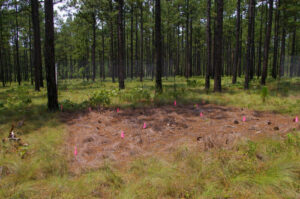
This photo, taken at Fort Bragg in North Carolina, shows several of the aspects of the experiment. The fences in the background are meant to exclude deer and wild hogs. The plot in the foreground received an herbicide treatment. PHOTO: W. BRETT MATTINGLY
They found that factors like needle depth, tree spacing and seasonal temperature and precipitation did have some influence on the initial success of seeding, including germination and establishment of healthy seedlings.
Specifically, cooler and wetter conditions promoted better establishment, as did shallower needle depth and greater spacing between trees.
These latter conditions reflect the ecosystem’s natural state of periodic low-intensity wildfires that burn up leaf litter and saplings.
The team found that preemptive herbicide applications did not measurably affect establishment.
Once a diverse understory of savanna plants became established, its long-term persistence was relatively unaffected by environmental factors — with one exception.
Higher temperatures during the height of the growing season were associated with poorer long-term survival among some species, indicating one threat posed by a warming climate.
In addition to highlighting risks of a warming climate, the results of the long-term study demonstrate that a single addition of native seeds can have clear benefits that last for years and years.
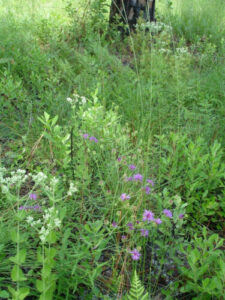
Here, some of the native understory species that established following seeding fill in the pine understory at an experimental site at Fort Stewart in Georgia. Species pictured include Eupatorium rotundafolim (white flowers) and Veronia angustifolia (purple flowers).
PHOTO: JOSEPH VELDMAN
“We can custom tailor the information from these experiments to conservation or restoration practitioners,” says Orrock.
“Depending on what your site is like, we can actually give you better information to increase the likelihood that you’re going to succeed in your endeavor of restoring these plant species,” he added.
While the results are most applicable in the context of the longleaf pine savanna ecosystem, they could prove useful for management of similar ecosystems, such as the oak savanna that once dominated large swaths of Wisconsin and the Midwest.
“I see a lot of parallels in the work that we do both here in Wisconsin in tallgrass prairie and oak savanna and longleaf pine savanna in the southeast,” says Damschen.
“In fact, many of the species are identical, and the major plant families are extremely similar,” she continued.
Looking forward, Orrock and Damschen say they would like to better understand the traits of species and even individual plants that might help them germinate and establish healthy seedlings.
This type of knowledge could prove especially useful for land managers dealing with new and rapidly unfolding environmental conditions associated with a changing climate.
Featured photo (by Phil Hahn) shows a longleaf pine ecosystem near Fayetteville, North Carolina.

